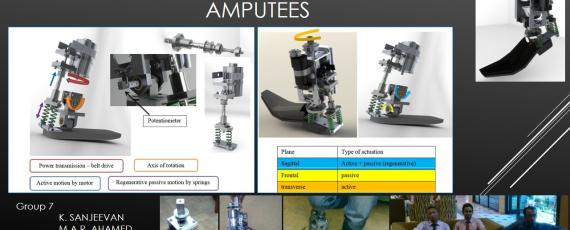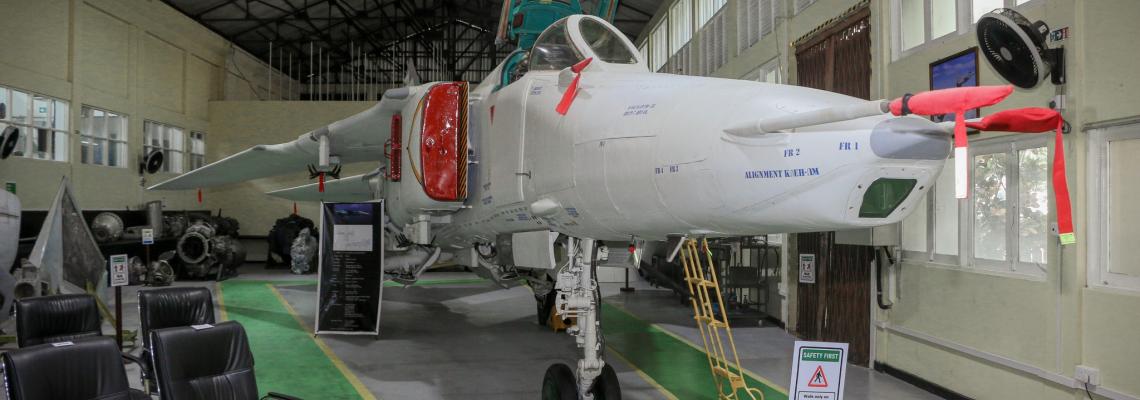A robotic lower limb prosthesis is an active device that replaces all or a part of the lower extremity. It provides the amputee the opportunity to perform functional tasks, particularly ambulation (walking), which may not be possible without the limb. The design of the prosthesis is depend on the functional level of the amputee and it is geared toward comfort.
Lower limb amputation is the most frequently occurring human limb amputation. Explosion of anti-person land mines is annually caused thousands of people become amputees in civil war prevailing nations. There are around 110 million active mines scattered in over 70 countries and 2,000 people are involved in land mine accidents every month in which around 800 losing their lives and the rest will turn as amputees. Most of these countries are developing countries either in Asian or African region. The victims in these regions are not capable of using high price active prostheses. The manufacturers of these prostheses do not bother to develop the devices for developing countries and they are only focusing on their own amputees.
Meanwhile, there are around 160,000 lower limb amputees in Sri Lanka mostly because of civil war raged for past three decades, including thousands of armed personalities who are struggling to re-establish themselves because of their amputations.
Apart from wars, natural disasters and accidents, amputations have to be carried ou due to various other reasons as well. Dysvascular related amputations, Trauma related amputations, Cancer related amputations and Congenital incidence related amputation are the other major types of amputation. There are around 347 million people are suffering from diabetes worldwide. In USA, 23.6 million are having diabetes which is 7% of their total population. Approximately, 1.7 million American people have limb amputation and 82% of new amputations occur due to diabetes in which most of them are undergoing lower-limb amputations. In England, about 6,000 diabetes related amputations are taking place in each year. Meanwhile, in Sri Lanka over 700 persons are amputated each year due to diabetes. When a person becomes an amputee, he is facing a staggering emotional and financial lifestyle changes. Further, the amputees are often viewed as objects of charity or pity in the society since many amputees lack the financial resources to obtain adequate prosthesis care.
In Sri Lanka, even passive prosthetic limbs are inaccessible and limited in terms of providers and funds because of lack of skilled technicians and donor support. The government does not have enough capacity to provide these services due to lack of facilities and trained people. Moreover, all the present prostheses used in Sri Lanka are either passive or body powered devices.
In these days, several robotics prostheses have being developed in many countries using various advanced technologies. However, insignificant amount of researches are being carrying out in Sri Lanka in this field. Yet, recently researches have been started in the Department of Mechanical Engineering, University of Moratuwa to develop robotic prosthetic limbs.
A prototype of robotic prosthesis for trans-tibial amputation is developed in this study. This research is the initial step of developing a robotic prosthesis for below knee amputees.
Most of existing prostheses are purely passive devices. They have stiffness properties independent of the walking conditions. This leads to a higher metabolic energy cost than seen in normal person and none of the available passive prosthesis is yet able to achieve approximately 70% of the required ankle power during stride.
There is a clear need in the market for active prostheses in order to improve the ability of amputees to perform their daily activities, give the amputees out a chance to live their normal lives again, to take pride in enjoying the fruits of their own labour and to stand with hope.









